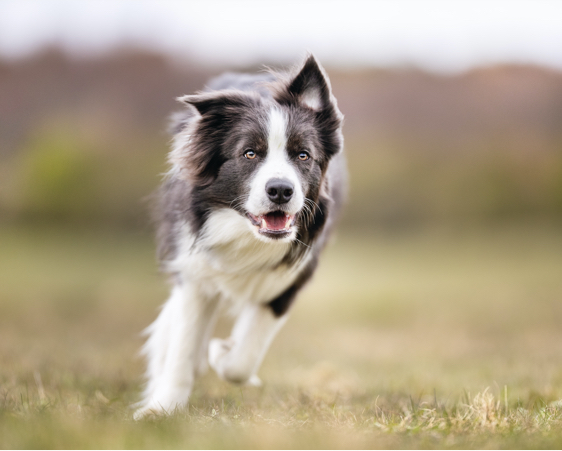1. Training should be an enjoyable experience for you and your dog. If you are not in the right mood for training, don’t even start. Keep training sessions short, on the order of 5-10 minutes, to maintain your dog’s motivation.
If your dog doesn’t respond appropriately to a command after several attempts, don’t reward him. Resume training a few seconds later using a simpler command. Return to the more complex task later.
Always end training on a positive note. Ask your dog to respond to a command you know he will obey. Then reward him for a job well done and issue a finish command such as “free” or “release.” Avoid common words such as “okay.” Following a training session, both owner and dog should be left with a feeling of accomplishment.
2. Every dog should be familiar with the basic obedience commands, including come, heel, sit, down and stay. Teaching your dog to sit-stay and down-stay off leash is also a valuable lesson. Additional commands that are useful include: leave it, give it, stop it, and enough or cease.
Keep in mind that a dog’s motivation to respond to a command decreases as the complexity of the task increases. The odds of success, hinge not only on the degree of sophistication of the task but also your dog’s motivation to respond. From a dog’s perspective the question is, which is more rewarding, chasing the squirrel or returning to the owner? Understanding this aspect will increase your patience and chances for success.
3. Training should not involve any negative or punishment-based components. There should be no yelling, no hitting, no chain jerking, no hanging, and absolutely no electric shock. Each session should be upbeat and positive with rewards for jobs well done.
Remember that the opposite of reward is not punishment; it is no reward. If you ignore unacceptable responses, your dog will not be rewarded for his failed response. Most dogs want to please their owners or, at the very least, to obtain highly valued resources (food, attention and toys).
4. Ensure that your dog’s motivation for reward is highest during a training session. If food is the reward, train before a meal, not after. If praise, petting and other aspects of your attention are to be used as a reward, schedule the training session at a time when your dog hungers for your attention (for example, after you have returned from work).
For complex tasks, such as the off leash down-stay, your dog will be more motivated to comply if he has received moderate exercise before the training session. Asking a dog that is bursting with energy to remain in a prolonged reclining position is asking for failure during the early stages of training.
5. Make sure the reward you offer in training is the most powerful one for your dog. Food-motivated dogs work well for food, but the treats used should be favorite foods for the dog, such as small pieces of cheese or freeze-dried liver. You want your dog to be strongly motivated to obey commands to receive the treat.
Food treats, if used, should be small – no bigger than the size of your little fingernail. The texture of the treat should be such that it does not require chewing and should not crumble, otherwise you will lose your dog’s attention as he Hoovers up the crumbs. Large treats, like Milk Bones®, take too long to eat, causing the dog to lose attention.
If praise is used as a reward, deliver it in high singsong tones, which are most pleasing for the dog. Also, enthusiasm in your voice will be much appreciated. If petting is to be used as a reward, it should be in a way that the dog enjoys, such as stroking the dog’s hair on the side of his face in the same direction that it grows, or scratching him on the chest. Note: Petting on top of the head is not appreciated by most dogs.
6. Timing of the reward is important. After a correct response, reward your dog within ½ second of the command to ensure that your dog makes the connection between his behavior and the reward.
7. Use short commands such as sit, down, leave it, quiet, out, and off. Say the word once. Do not repeat the command. Dogs will remember a command for about two minutes before the notion is lost. Shorter words are better than longer words and words that end in a hard consonant (C, K, T, X) are better than those that end in a vowel because you can “spit” them out.
The only command that should have three sounds associated with it is come. In this case, you first have to attract the dog’s attention by saying his name, ROVER, then COME (the actual command word) and GOOD BOY, even before the dog comes so that he knows he is not in trouble. Make sure your tone is crisp and cheerful.

